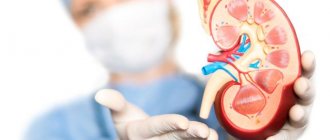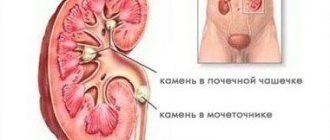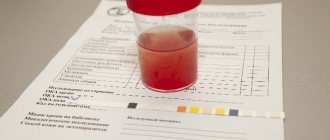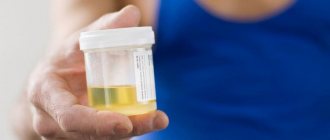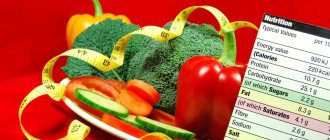body .attr-article__date{ background: none; padding: 0; }
NEAD EAD SEAD South Administrative District South-Western Administrative District CJSC Central Administrative District SZAO Northern Administrative District 01 02 03 05 06 07 08 09 1 0 1 1 1 2 14 18 15 16 17 Babushkinskaya Prospekt Mira Pervomaiskaya Baumanskaya Paveletskaya Teply Stan Shipilovskaya Prague Academic University Barrikadnaya River Station Oktyabrskoye Bratislava Taganskaya Academician Yangelya October Field
The call center is open 24 hours a day
Ambulance 24/7
Home Health from A to Z Useful information Diet No. 14
Publication date: 05/20/2021
until January 31
You get 10% cashback when purchasing a gift certificate More details All promotions
Diet for escalate, urate and phosphate kidney stones
Urolithiasis is a common urological disease in which stones (calculi) form in the kidneys, ureter or bladder. The main reason for the formation of stones is metabolic disorders, so a proper diet is not only an indispensable form of effective treatment, but also the main prevention of urolithiasis. Very often, the presence of stones is detected during a kidney ultrasound, and the patient may not have any symptoms. In the case when the stones reach large sizes and depending on their shape and location, various symptoms may appear:
- Pain of various types in the abdomen or lower back;
- Frequent urination, during which there is discomfort;
- Renal colic in the form of sharp pain;
- The presence of sand in the urine;
- Nausea (usually due to severe pain)
- Uncharacteristic (cloudy) color and sharp unpleasant odor of urine;
The starting materials for the formation of stones are precisely the components of the food we eat. The diet for each patient is prescribed individually, as it depends on the substances that form kidney stones, the size of the stones, the frequency with which they occur and, of course, on the composition of the stones.
The most common is the classification of stones according to their chemical composition, according to which stones are distinguished:
- oxalate,
- urate,
- phosphate.
To determine exactly what composition of stones you have, a thorough examination is necessary:
- general urine analysis,
- analysis of urine and blood for salt transport.
- in the presence of a stone - analysis of the mineral composition and structure of the urinary stone or its fragments.
What is an allergy?
If you ate one tangerine and there was no reaction, but a box of tangerines was sprinkled on it, then, as we said above, this is food intolerance. Histamine liberators worked.
Since a true food allergy does not depend on quantity, there will be a reaction even from one tangerine slice, and such an allergy can be detected by simple allergy tests. There is an exception in the form of cross food allergies, where a seasonal allergy, say an allergy to pollen, can manifest an allergy to citrus fruits.
A good illustration of an allergic reaction and its difference from a pseudo-allergic reaction is shown in Fig. 1
Figure 1 - Classification of allergic reactions according to A.D. Ado, 1978
Food allergies are most often first identified in childhood. Nutritional disorders in women during pregnancy and lactation play a leading role in the formation of food allergies in a child. Provoking factors include:
- early transfer of the child to artificial nutrition,
- improper introduction of complementary foods,
- diseases of the gastrointestinal tract and hepatobiliary system (diseases of the liver and biliary tract),
- irrational approach to child nutrition, deficiency of essential nutrients.
The causes of allergies in adults most often include diseases of the digestive system, microbiota disorders, disturbances in the functioning of enzymatic organs (bilious, pancreatic), disrupted food intake, independent transition to strict eating styles (fruit-eating, fasting, keto, etc.) without approval with a specialist.
Diet for oxalate stones
Since oxalate kidney stones are formed by excessive consumption of foods rich in oxalic acid, then, obviously, you should refrain from consuming it. You should stop eating sorrel, rhubarb, and spinach. As the acid concentration decreases, the salts will no longer precipitate. In addition to foods containing oxalic acid, do not consume those containing gelatin, as well as lettuce, figs, chocolate, nuts and cocoa.
If there are oxalate stones, it is advisable for the patient to introduce foods containing magnesium into the diet (buckwheat, green leafy vegetables, oatmeal and millet, pumpkin and its seeds). It is also recommended to consume 2-2.5 liters of fluid daily. Increase the consumption of apples, plums, grapes and pears in your diet.
Diet for urolithiasis
OXALATURIA AND OXALATE LITHIASIS: For oxalate stones and hyperoxaluria, use: Pyridoxine (vitamin B6) at a dose of 300 mg/day or MagneB6 1 tablet 2-3 times a day for at least a year (with regular monitoring of oxalic acid in the urine) . If there is no effect after a year of therapy, then treatment for urolithiasis should be stopped. If effective, this dose should be maintained or increased to 1 g/day. Alkaline citrate (Blemaren). For dosages for adults, see instructions. The dose for children is 0.10–0.15 g/kg body weight. Calcium. Its consumption should be at a sufficient level (in children 600–1000 mg/day). High concentrations of calcium in the intestine promote the binding of oxalate and reduce its intestinal hyperabsorption. Magnesium preparations (see above). NSAIDs that may have an effect in patients with severe recurrent calcium oxalate urolithiasis.
Components of metaphylaxis are measures that include reducing body weight, increasing physical activity, avoiding excess fluid loss (sauna, prolonged exposure to the sun and excessive exercise), reducing stress, and getting enough sleep. In patients with elevated oxalic acid levels, foods rich in oxalate should be limited. Diuresis should be increased to 2–2.5 l/day.
Products containing large amounts of calcium oxalates are prohibited: animal entrails (liver, spleen, kidneys, brains, etc.), herring, broths, jellies, lettuce, sorrel, spinach.
The following are prohibited or limited: smoked foods, spicy foods, pickles, marinades, vinegar, horseradish, mustard, pepper, adjika, alcoholic drinks.
Limits: fried meat, milk (no more than 2 glasses per day), eggs (no more than 1 piece per day), fish roe, canned fish, legumes, turnips, rhubarb, radishes, radishes, onions, garlic, chocolate, cocoa, strong tea, coffee.
Allowed: vegetables, fruits, including cabbage, potatoes, mushrooms, beets, tomatoes, cucumbers, flour and cereal dishes, fats (especially vegetable), honey, sugar, etc.
Healthy: quince, oranges, watermelon, birch sap, lingonberries, grapes, raisins, pomegranate, pear, melon, strawberries, strawberries, potatoes, lemon (no more than one per day), tangerine, dogwood, stone fruit, olives (fruits, olive oil) ), carrots, cloudberries, nuts (walnuts and pine), rowan berries, currants (red and black), blueberries, apples. Particularly healthy products are highlighted. For kidney diseases, and in particular for oxalate lithiasis, you should also consume foods that have a diuretic effect: pineapple, rutabaga, cherry, blackberry, zucchini, viburnum, cabbage, chestnut, cranberry, raspberry, mango, oats (porridge), cucumber, peach , turnip, plum, pumpkin, cherry, mulberry, barley (porridge). In the absence of identified metabolic disorders in oxalate lithiasis, magnesium preparations, citrate preparations and herbal diuretics are prescribed. Sanatorium-resort treatment includes taking such mineral waters as Naftusya, Slavyanovskaya, Smirnovskaya, Dolomitny Narzan, etc.
URATE LITHIASIS Increase in urine pH to 6.5–7.0. It is achieved by using alkalizing citrate mixtures (Blemaren), which are taken in an individually adapted dose under the control of urine pH in the range of 6.2–7.0 until the stone dissolves during descending litholysis and for 2.5–3 months every six months during metaphylaxis. In case of intolerance to citrates, sodium bicarbonate is prescribed, the dosage is selected depending on the pH of the urine. Reducing the concentration of uric acid. Achieved by taking Allopurinol. Doses vary depending on the patient's body weight, treatment goals, or type of syndrome being treated; usually 100 mg 1 to 3 times daily. In case of detection of uric acid stones with calcium admixture, a combination of citrate mixtures (Blemaren) with Allopurinol and Pyridoxine and thiazide and magnesium preparations is recommended. Dilution of urine. Achieved by water loading and taking herbal diuretics.
Patients with uric acid stones require a strict dietary regimen based on limiting uric acid intake to 500 mg per day (limit intake of animal proteins (1 g protein/kg body weight per day), purines and ascorbic acid).
Fluid intake should be at least 2–2.5 liters per day. At least once every 7–10 days, it is recommended to observe fasting days (dairy, vegetable, fruit) with an increase in the amount of daily fluid. Vegetarianism is not recommended.
Products with a high content of purines that shift the urine pH to the acidic side are prohibited: meat of internal organs of animals (liver, kidneys, brains, etc.), meat and fish broths, jellies, canned food, herring, radishes, radishes, asparagus, Brussels sprouts, spinach , sorrel.
If there is an inflammatory process or a stone in the kidneys/urinary tract, the following are prohibited, and in their absence, the following are limited: smoked foods, spicy foods, pickles, marinades, vinegar, horseradish, mustard, pepper, adjika, alcoholic drinks.
Limit: meat, fish (consumed mainly boiled no more than 5 times a week, 200–250 g), eggs (no more than 1 piece per day), fish caviar, crayfish, legumes, mushrooms, onions, garlic, chocolate, cocoa, strong tea and coffee
Allowed without restrictions: milk and all types of dairy products, vegetables, fruits, flour and cereal dishes, fats, honey, sugar, etc.
The following products that have medicinal value for this disease are useful: orange, watermelon, birch sap, lingonberry, grapes, raisins, pomegranate, pear, melon, strawberry, potato, lemon, tangerine, dogwood, stone fruit, olives (fruits, olive oil), carrots, cloudberries, nuts (walnuts and pine), currants (red and black), blueberries, apples. Particularly healthy products are highlighted.
You should take mineral waters such as Naftusya, Borjomi, Slavyanovskaya, Smirnovskaya, Dolomitny Narzan.
CYSTINE LITHIASIS Cystine stones are formed as a result of a hereditary metabolic disorder in the kidneys. When cystine excretion is below 3.0 mmol/s, Blemaren and ascorbic acid are recommended. For cystine excretion above 3.0 mmol/s – Thiol (tiopronin) 0.25–2.0 g per day, Captopril 75–150 mg per day. Penicillamine, Furosemide, and herbal diuretics are used as additional therapy. Fluid intake should be at least 3.5 liters per day.
The following products are prohibited: meat of internal organs of animals (liver, kidneys, spleen, brains, etc.), gelatin.
Limit: meat and fish (consumed mainly boiled 5 times a week, 200–250 g per day), eggs (no more than 1 piece per week), wheat flour products, legumes. All other products are allowed.
The following products that have medicinal value for this disease are useful: orange, watermelon, birch sap, lingonberries, grapes, raisins, pomegranate, pear, melon, strawberries, potatoes, lemon, tangerine, dogwood, olives (fruits, olive oil), carrots, cloudberries, nuts (walnuts and pine), currants (red and black), blueberries, apples.
PHOSPHATE LITHIASIS For all types of calcium and, in particular, phosphate stones, terpene-containing drugs are prescribed: Urolesan or Cystenal 5-10 drops on sugar under the tongue 3 times a day for 10 days a month, complex herbal remedies, cranberry extract 2 tablets 3 times in a day. Calcium phosphate stones form depending on the pH level of the urine: struvite stones are found only in infected, alkaline urine, and brushite stones form in an acidic environment. Brushite stones are in most cases monomineral and have a high risk of recurrence. In this case, it is necessary to exclude obstruction of the urinary tract and pay special attention to urine dilution. A diuresis of at least 2.0–2.5 L per day should be achieved; limit coffee, tea, milk; exclude citrus juices, mineral waters rich in calcium, lemonades containing sugar, and alcohol. It is not recommended to follow a strict vegetarian diet. It is necessary to control calcium intake: avoid eating hard cheeses, replacing them with yogurt and cottage cheese. In such cases, Hypothiazide is prescribed daily or every other day in combination with potassium supplements. The basis of treatment for patients with struvite (infectious) stones is antibacterial therapy, which should be carried out according to the principles of rational antibiotic therapy. In case of alkaline urine, it is necessary to acidify urine by prescribing Methionine 500 mg 3–6 times a day (depending on urine pH) or Ammonium chloride 200–500–1000 mg per day for 3 doses (depending on urine pH). In the absence of effect and/or severe urinary infection, acetohydroxamic acid (Lithostat) 250 mg 2–4 times a day is recommended. The most important metaphylactic measure for this type of urolithiasis is the complete destruction and removal of the stone from the bladder and elimination of the infection. It is necessary to achieve a diuresis of 2.0–2.5 liters of urine per day. To control the volume of liquid you drink, you need to check the density of your urine. If it is higher than 1.010 g/l, it is necessary to increase fluid intake. If phosphate excretion is more than 35 mmol/day (11.67 mmol/8 hour), aluminum hydroxide is prescribed up to 3.5 g/day in 2–3 doses. Aluminum hydroxide inhibits intestinal phosphate absorption by forming insoluble aluminum phosphate salts. Primary phosphaturia, aseptic phosphate stones (brushite, whitlockite). Limit foods that promote alkalization and contain large amounts of calcium salts: herring, legumes, Brussels sprouts, lettuce, sorrel, spinach, vegetables, citrus fruits, egg yolks, onions, garlic, fermented milk products (no more than 1-2 glasses per day), cottage cheese, cheeses, pickles, marinades, vinegar, horseradish, mustard, pepper, adjika, alcoholic drinks. Allowed: meat and meat products, flour, cereal dishes, fats (especially vegetable), fruits, honey, sugar, etc. Secondary phosphaturia, urinary system infections (infectious or struvite lithiasis). Prohibited: smoked meats, pickles, vinegar, horseradish, mustard, pepper, adjika, alcoholic drinks. Limit: milk, cottage cheese, citrus fruits, legumes, onions, garlic. Allowed: other products. The following products that have medicinal value for this disease are useful (particularly useful products for sections 1 and 2 are emphasized): watermelon, birch sap, lingonberries, grapes (berries, juice), raisins, pomegranate, pear, melon, strawberries, dogwoods, olives ( fruits, olive oil), carrots, cloudberries, nuts (walnuts and pine), currants (red and black), blueberries, apples, 1–3 glasses of weak infusion of kombucha per day, 1–3 tbsp. tablespoons of fish oil or vegetable oil per day.
Diet for urate stones
Urates are a type of stones formed when there is an excess of uric acid in the urine, which is the end product of purine metabolism. The largest amount of purines is found in meat, legumes, rich broths and jellies.
Therefore, if you have been diagnosed with a lost stone, you should reduce your consumption of fish and meat. This type of stone grows quickly, but with proper nutrition, it can shrink.
It is recommended to drink tea with lemon, juices or compotes, preferably on an empty stomach. Stop eating chicken, veal, legumes, mushrooms, liver, cauliflower altogether, and instead increase your diet with fermented milk products, lemon, grapefruit and porridge.
To reduce the salt concentration, you need to drink a lot (the daily norm should be approximately 3 liters).
Diet for phosphate stones
The diet for phosphate kidney stones is aimed at normalizing the pH of the urine and involves primarily consuming those foods that acidify it in order to prevent the appearance and precipitation of phosphate salts and to excrete calcium along with the urine. If you have phosphate stones, you should limit your intake of foods with phosphorus and calcium. Do not consume: dairy products, smoked products, baked goods, potatoes, spices. Increase in the diet: meat, fish, eggs, cereals, sour apples, confectionery, honey. Increase fluid intake to 2 liters per day.
Oxalates in urine diet dos and don'ts
The appearance of oxalates in urine is very seriously influenced by eating habits. If these salts were detected in the human body once, this can be explained as a consequence of the consumption of cocoa, beets or sorrel. In cases where the presence of oxalates was confirmed through repeated analysis, the attending physician diagnoses a deterioration in metabolic processes.
General principles of diet for oxalate formations
For the process of dissolving and removing oxalate stones or sand from the body, it is necessary to adhere to the following 11 basic principles:
- The size of the diet should be average, you should not overeat;
- abundant drinking regime. The recommended amount of fluid intake daily should be at least 2.5 liters;
- fractional meals (at least 5 times a day in small portions);
- reducing sugar in the diet to 25 g per day;
- exclusion of fatty meats from food;
- limiting salt intake;
- consumption of foods high in calcium, phytin, as well as vitamins D and B2;
- complete exclusion of canned foods and spicy seasonings from the diet;
- refusal of alcoholic beverages;
- periodic use of diuretic decoctions;
- The daily calorie content of all dishes should be in the range of 2800-3000 kcal.
Recommended Products for Oxalates
- If oxalate formations are detected in the body, patients are recommended to use all types of cereals and vegetarian soups made from them in their diet.
- Fruits such as apples, pears and grapes most contribute to the removal of oxalic acid.
- Patients with oxalate in the kidneys are prescribed special mineral waters with a small alkaline content, and cucumber juice is considered the most effective drink for this diet.
Allowed foods
The therapeutic diet allows the consumption of the following foods:
- cabbage, carrots, cucumbers, eggplants, potatoes;
- grapes, apples, pears, watermelons, melons, peaches, nuts, dried fruits;
- rye and wheat bread baked from second grade flour, as well as bran;
- sour cream, milk, kefir, cottage cheese, but not more than 300 g per day;
- boiled eggs, but no more than 2 pieces per day;
- lean meat or poultry up to 200 g per day. All meat is consumed boiled or fried if it has been previously boiled;
- unsalted and low-fat fish;
- pasta or cereals.
Foods that should not be eaten include:
- all fried foods;
- all kinds of sausages, fatty meats, meat by-products;
- canned meat and fish;
- salted and smoked fish, caviar;
- all legumes, tomatoes, beets, radishes, bell peppers, green beans, peas;
- all types of citrus fruits, cranberries, currants;
- chocolate, ice cream, jam, dough sweets;
- strong coffee, cocoa, kvass, tomato juice.
Method of cooking in the presence of oxalates
Proper diet in the presence of oxalate formations in the kidneys or urinary tract includes the correct method of preparing dishes. Boiling and steaming of food is allowed. It is not forbidden to fry lean meat, chicken or fish after boiling them.
But do not forget that steaming cannot reduce the concentration of oxalate microelements in greens.
You should not fry foods with a high content of oxalates, since cooking in this way only reduces the amount of microelements necessary for the body, which, in turn, reduces the quality of the diet.
Example menu for oxalate formations
At the initial level of using the diet, it will be much easier for the patient to adhere to the recommendations of the menu already developed by the specialist. Ready-made diet tables will allow you to apply all the norms of a proper diet without wasting time studying a large amount of information. Below is one of these diets, designed for 3 days
Day 1
- For breakfast, medium-sized oatmeal porridge cooked with milk and diluted with dried fruits, a mix of permitted fruits and green tea are perfect.
- For second breakfast, you can use apple juice and a banana.
- For lunch, vegetarian soup seasoned with sour cream, a piece of rye bread and a small piece of boiled beef are recommended.
- As an afternoon snack, you can eat low-fat cottage cheese with kefir up to 1% fat.
- Dinner is durum wheat pasta with chicken fillet and cabbage salad.
Day 2
- Breakfast includes a 100 g piece of soaked herring and a vinaigrette seasoned with sour cream, as well as a cup of weak coffee or tea.
- For second breakfast - fruit salad.
- For lunch, you can prepare vegetable broth and a steamed cutlet. Wash everything down with fresh cucumber juice.
- For an afternoon snack - a salad of fresh carrots and cabbage and a glass of low-fat kefir.
- Dinner includes rice porridge cooked in milk and stewed vegetables.
Day 3
- Have breakfast with a small portion of muesli with milk, an apple and a cup of weak coffee or tea.
- For second breakfast, you can satisfy your hunger with cabbage salad.
- For lunch, prepare oven-baked fish and potatoes and a light vegetable salad.
- For an afternoon snack - a glass of milk and a small portion of apple pie.
- You can have dinner with steamed fish cutlets and vegetable lasagna.
A patient with detected oxalate formations should not limit fluid intake in the evening, as this helps slow down the process of formation of new stones in the kidneys. However, if a person, in addition to oxalates, has swelling or problems with the cardiovascular system, the amount of fluid consumed should not exceed 1.5 liters per day.
Compliance with such a diet is not strict and is recommended for use on a long-term or permanent basis. Health is a very important resource that contributes to a long and fulfilling life. Making a little effort in the area of nutrition will help restore and maintain excellent health.
